

Adelina Karpenkova


Organizations are constantly navigating change.
From migrating from a legacy ERP to implementing cloud ERP systems to launching a rebranding campaign — your employees are constantly involved with change initiatives.
Training employees to adapt and embrace change management projects empower leaders and employees to successfully navigate change, minimize operational disruption, and fight change fatigue.
In this guide, you’ll find a step-by-step plan for building a custom change management training program and a list of the best change management courses that will help train your team members on how to adapt, navigate, and overcome change.
Change management training is an initiative aimed at helping employees successfully navigate organizational change. It provides all the necessary tools and knowledge for teams to adopt changes and ensure minimal disruption to organizational operations.
Change management training programs can be split into two types:
Training for leaders is more strategic and focused on managing change at an organizational level, while training for employees is more tactical and focused on helping individuals navigate change at a personal level.
Leaders need to go through change management training to gain the skills required to develop successful change initiatives and help their teams to manage change. Leaders are often trained to develop change management plans, assess risks, and communicate the benefits of change to stakeholders.
Employees require training to understand and cope with changes that affect their jobs and work processes. This involves topics like the psychology of change, communication, and training on new processes or systems.
Change management training may also be customized to address the needs of specific departments and teams.
Here are a few benefits of implementing consistent change management training.
People don’t like change. Unless they understand the benefits of undergoing the change, they’ll be reluctant to take an effort to adopt innovation.
Training helps you equip leaders with knowledge and tools to identify and address internal resistance to change. It also helps communicate your change strategy to the employees in a way that makes them feel more comfortable with the upcoming transformations.
According to the force field theory, reducing the resistance of one force will strengthen the force (change) you want to increase. Consider your employees’ resistance to change as part of your force field analysis during change management.
Change fatigue is a challenge that often comes to replace resistance to change. Even if you manage to overcome initial resistance, it’s difficult to maintain employee engagement and motivation throughout a prolonged period of change.
Ongoing change management training will help employees embrace long-term change, build resilience, and stay motivated throughout the process.
Like it or not, change disrupts the way your company operates. But an effective training program helps minimize disruption to day-to-day procedures and maintain operational efficiency.
Change management training teaches leaders to identify risks that come with different change initiatives and develop strategies to minimize those risks. This way, leaders and employees are prepared to handle potential disruptions and keep operations running smoothly.
A successful change strategy involves multiple stakeholders and often requires cross-departmental collaboration. Change management training helps employees understand their role in this collaboration, take ownership of the project, and get more motivated to work together towards a common goal.
All things considered, training helps organizations develop effective change strategies and execute them. Any successful change initiative starts with quality leadership and employee training.
Creating a change management training program requires consistency. Stick to a plan to deliver a program that helps your employees navigate change. Here is a 10-step plan to help you create, deliver, and manage an effective change management training program for your employees.
Change management training must be focused on a specific change initiative. So before you build a training program, you must fully define your enterprise change management strategy.
If you haven’t done it yet, here are the steps you need to take:
Once you have an idea of what this particular transformation will involve and how it affects people in your organization, you can develop a change management training plan accordingly.

To align everyone involved around a common purpose, you must create a vision for the change. A vision outlines the goals and objectives of change, helping stakeholders understand the benefits of the initiative and get on board with the idea.
To create a vision, you should:
A vision statement will create a sense of urgency around the need for change and motivate your employees. It will also help you guide the development of the change management training program by providing a clear understanding of the outcomes that the program should support.
To identify the topics you need to address with change management training, talk to your employees. Explain the change initiatives that are to be implemented and ask them what they would need to embrace the change.
Whether during an in-person meeting or with a simple online survey, such a simple step will allow you to involve all stakeholders early and incorporate their feedback into your training plan.
When undergoing organizational change, you’ll inevitably face issues impacting an organization’s bottom line. These can be delays in implementation and results, compromised quality standards, increased costs, and more. You can proactively manage potential issues that could derail your change initiative by assessing the risks associated with the change beforehand.
Once you specify potential change risks, you’ll be able to formulate tactics to mitigate them. By including a risk management plan in your training program, you’ll warn your stakeholders about possible issues and give them the necessary tools and methods to address these issues proactively.
Establishing a timeline for your change management training program helps you set expectations, allocate resources effectively, and ensure that the training is aligned with the overall change initiative timeline.
To establish a timeline for your change management training program, follow these steps:
The employee training methods you choose must be tailored to the needs of your organization, the learning styles of your employees, and the specific change initiative you are implementing.
Here are some employee training programs particularly effective for change management training:
To address the learning styles of different individuals, you can pick several training methods and combine them in your program.
Don’t be afraid to implement new technology. Some change management tools can make it easier for your employees to navigate change.
You can use a digital adoption platform such as Whatfix to train people on the tools you’ve adopted as a part of your change initiative. Whatfix overlays onto any software solution and empowers IT and L&D teams to create in-app guidance and self-help support directly inside your digital applications and processes with a no-code editor.
With Whatfix, organizations can create:
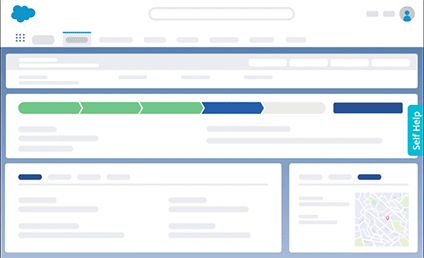
You need to assign change leaders responsible for helping the rest of the company navigate the change process. These change agents are people who have hands-on experience with this particular change initiative or technology. They also need strong leadership and communication skills to inspire and motivate people through the transition.
Empower your change leaders to bring their experience to the table by involving them in the development and delivery of the training program.
Establishing change leaders creates a sense of ownership and accountability for the change initiative, which ultimately increases the chance of success.
Change is a process, not a one-off event. To ensure continuous innovation and prevent change fatigue, you need to provide ongoing change management training and support to your employees.
This is how you can build a culture of continuous training:
You should be adjusting your program continuously to address the changing needs of your organization and achieve desired outcomes. Employee feedback helps measure the impact of your program and identify areas that need improvement.
To collect feedback, you can use various methods, such as surveys, interviews, and focus groups. You can ask post-training questions like:
It’s important to note that feedback must be collected on an ongoing basis, not just at the end of the training program.
✓ Thank you, the template will be sent to your email
You don’t have to develop a custom training program or rely on your current company to provide you with the training to become a change management expert.
There are many change management certification programs and online courses that provide excellent change-related resources to build your experience and knowledge.
Here are ten of the best change management training courses to explore:
Change Management For Organizations is a 1-hour video course for leaders looking for a framework to structure their change strategy and communicate it to stakeholders. The course is complete with 14 downloadable resources and a final practice test.
Level: Beginner

The 18-hour course consists of six modules where change leaders gain insights to design successful change initiatives. The program includes video lectures, quizzes, discussion prompts, and written assessments to provide students with a structured learning experience.
Level: Beginner
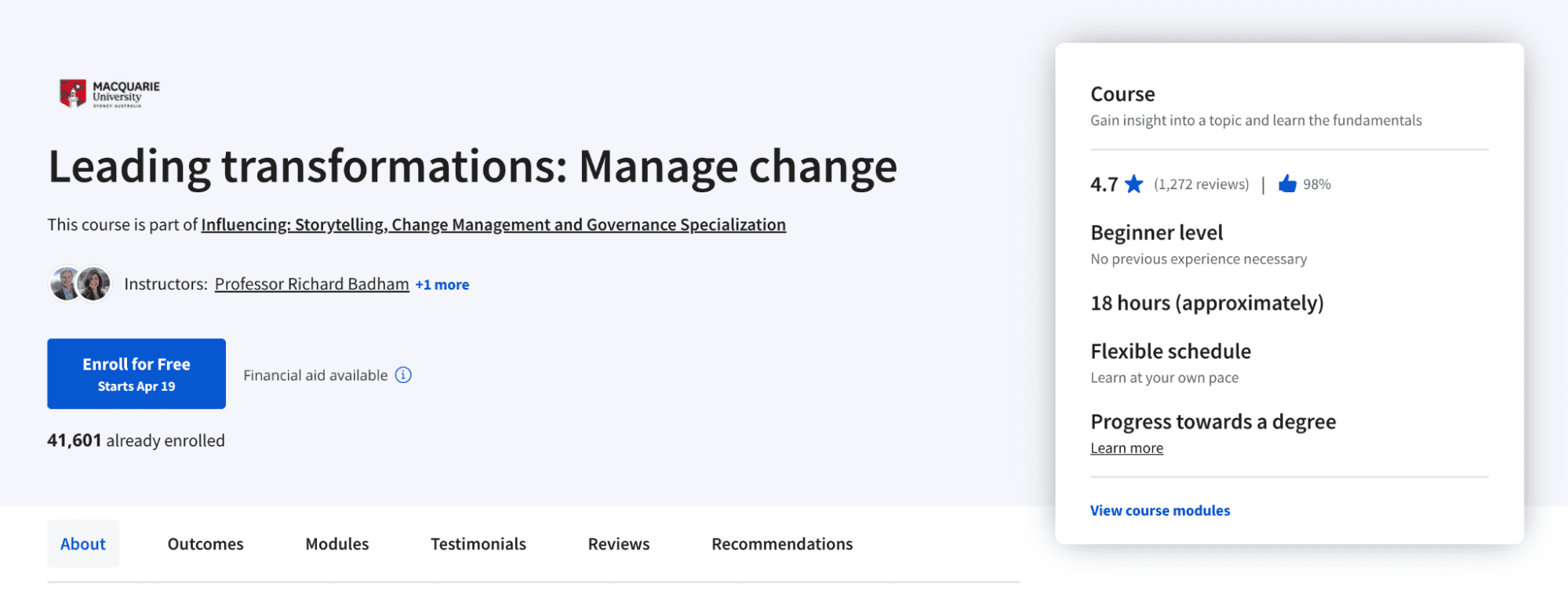
The course focuses on explaining the lean change management methodology. In six hours of on-demand training, students discover how to implement continuous improvement and lean culture in their organization.
Level: Beginner
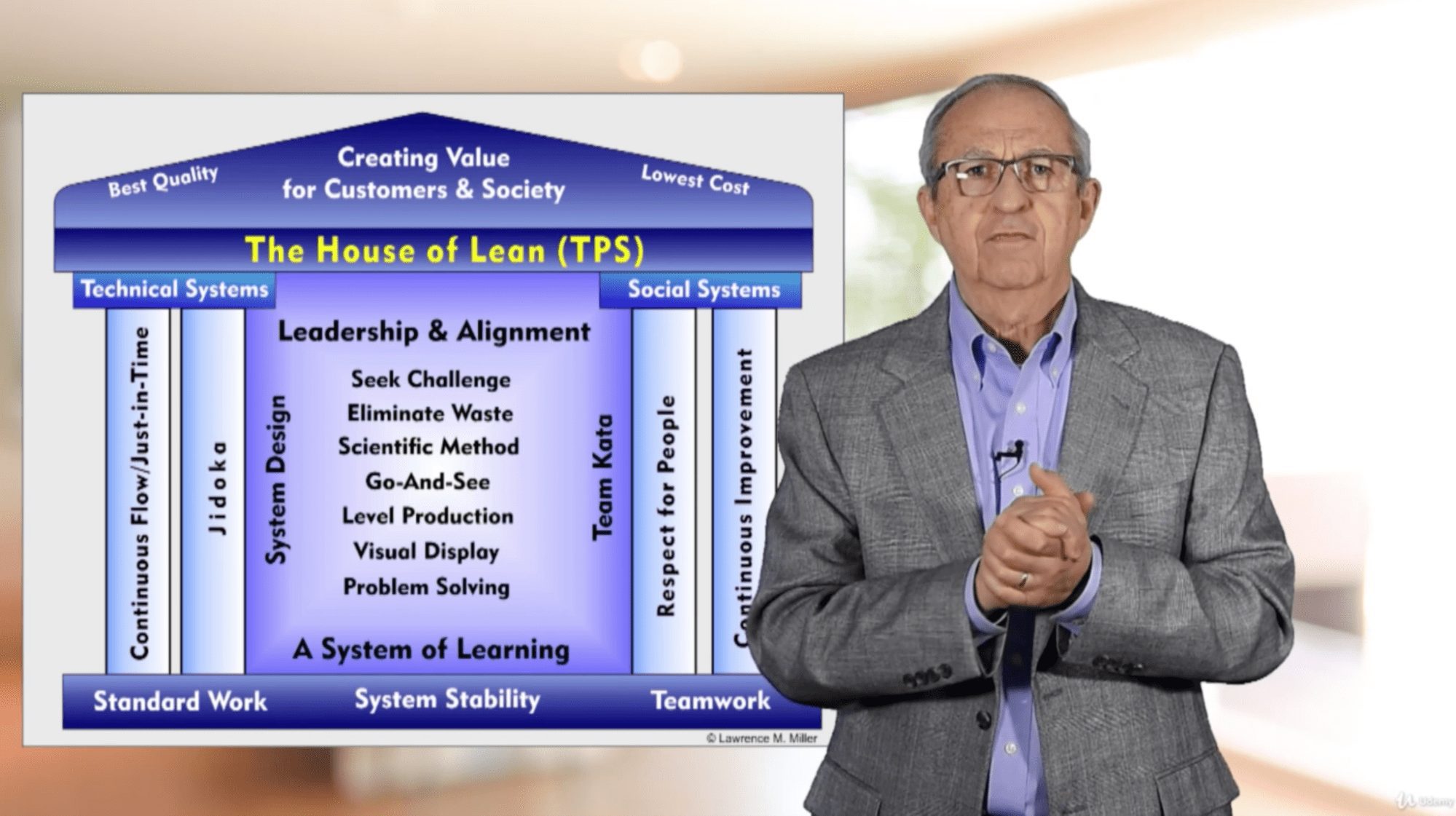
The brief Udemy course is designed for senior managers that need guidance with implementing change in their organization. It’s a great option for leaders that lack theoretical knowledge of change management.
Level: Beginner

The change management course aims at helping organizations and their people effectively plan and navigate transformation initiatives. The course is delivered as instructor-led training for 4/5 days, usually from Monday to Friday.
Level: Beginner/Intermediate

Todd Dewett, a leadership and success author, offers an introductory course to change management for leaders. It helps managers to communicate their change strategy, foster collaboration in the workplace, and apply active listening to collect employee feedback. It’s a good place to start learning about change management.
Level: Beginner

This is another short course that covers the key principles of change management. You can include it in your company’s training program to help your employees fight the fear of change and equip them to thrive through your change process.
Level: Beginner
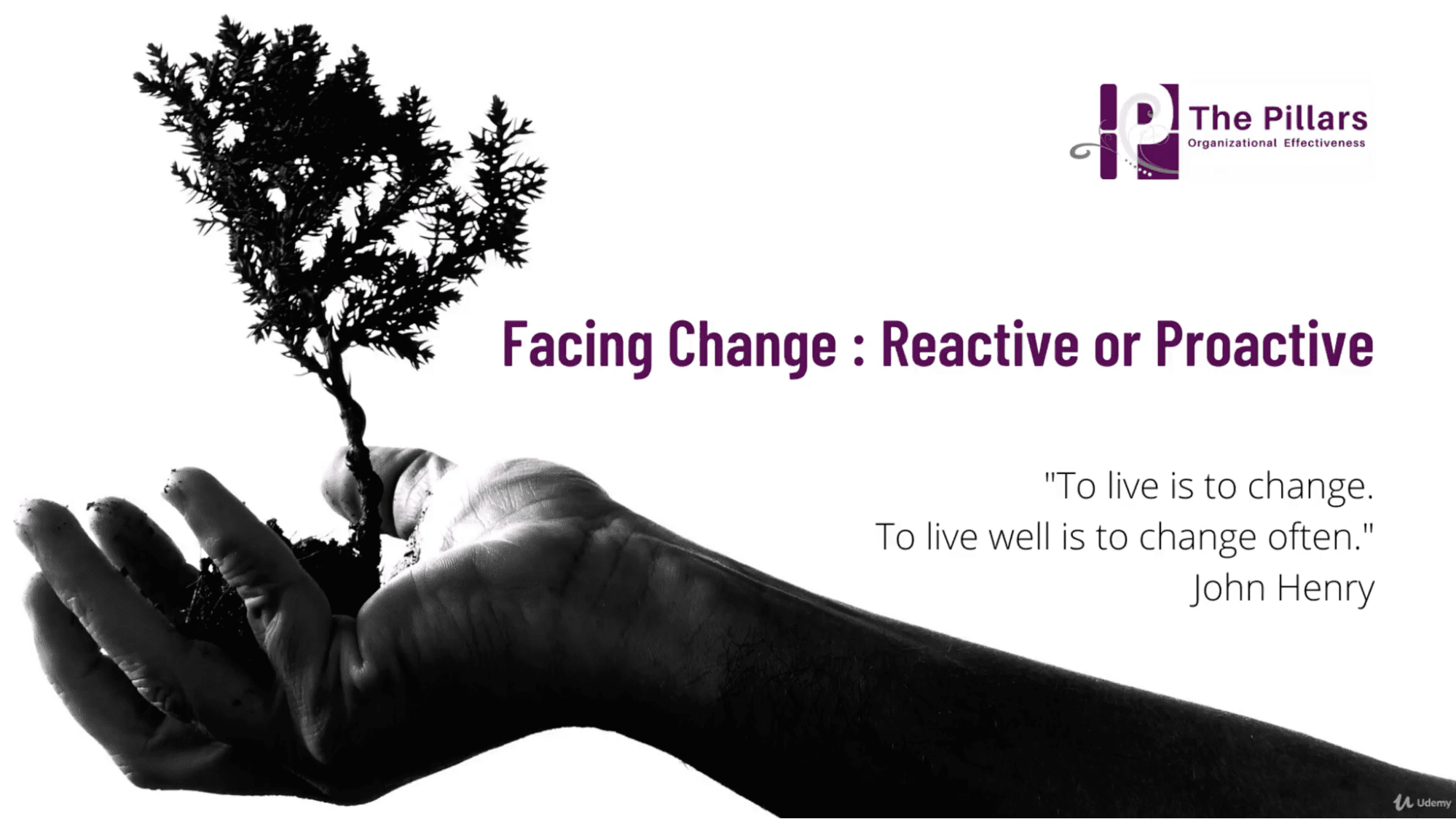
This is the second course by APMG for transformation managers willing to gain practical change management skills. To enroll in the program, you need the certificate of completion from The Change Management Foundation course.
Level: Intermediate/Advanced

This is the second course by APMG for transformation managers willing to gain practical change management skills. To enroll in the program, you need the certificate of completion from The Change Management Foundation course.
Level: Intermediate/Advanced
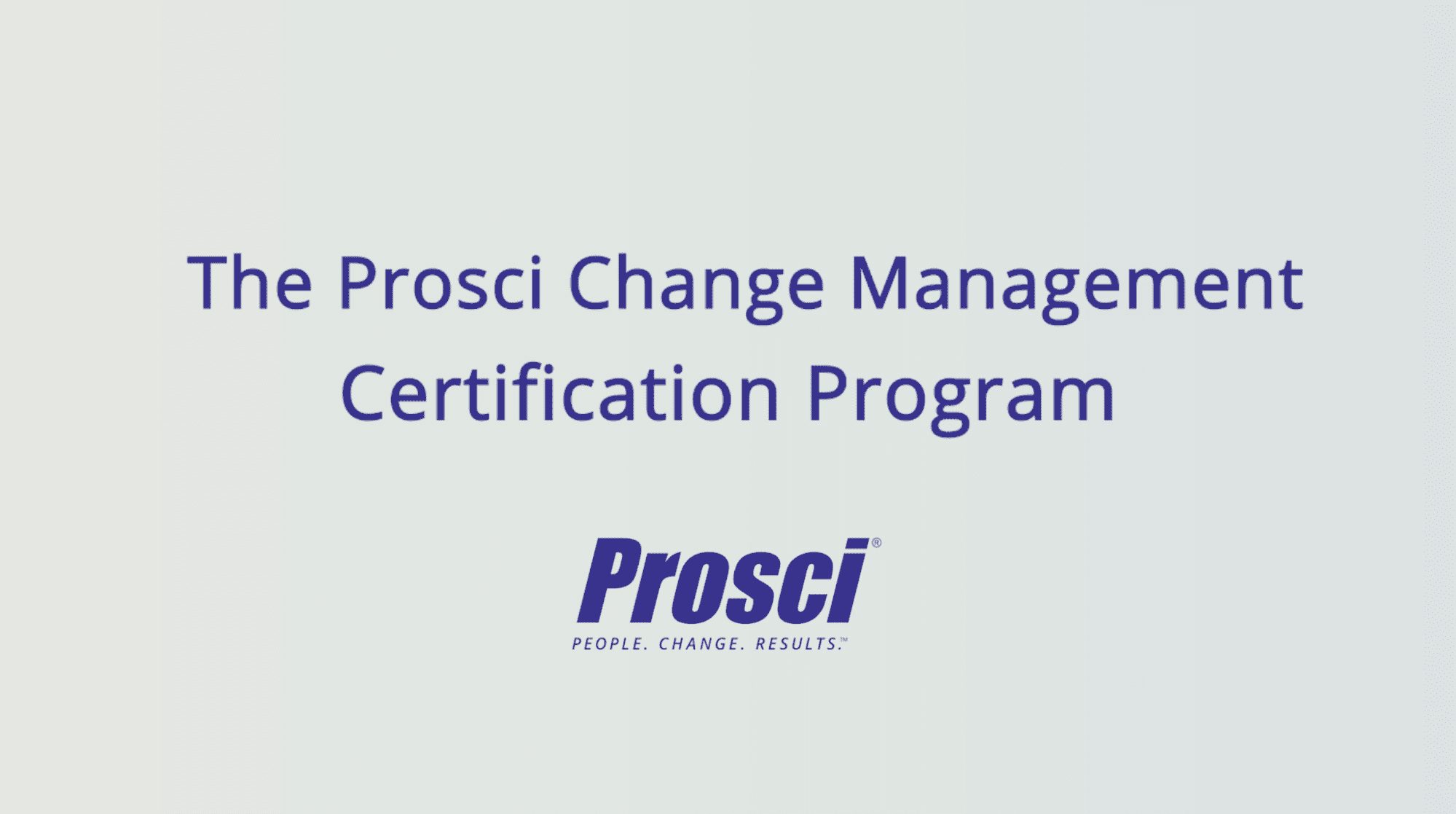
The program focuses on change management communication. This is a very practical change management training course, filled with examples, tools, and templates to help change experts act on acquired knowledge right away.
Level: Intermediate

The key to creating a successful change management training program is adopting the right tool that will help your workforce to adopt change faster and more proficiently.
A digital adoption platform such as Whatfix is one such tool you need to carry out change management initiatives related to introducing new technology and digital processes without friction. Whatfix makes it easier for your employees to master new business software or application with in-app guidance, interactive walkthroughs, smart tips, and in-app support.
Furthermore, it also enables you to track the progress of your change management training and gather feedback from the team to measure training effectiveness and continuously improve the program.
To learn more about how Whatfix enables change management, schedule a free demo with us today!
Thank you for subscribing!
Thank you for subscribing!